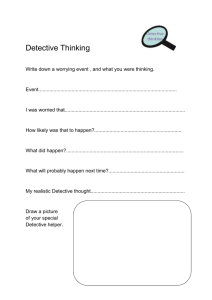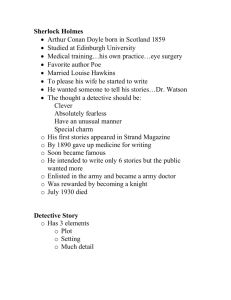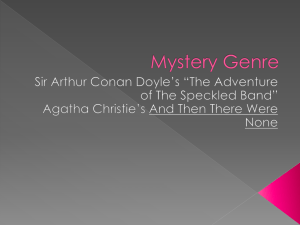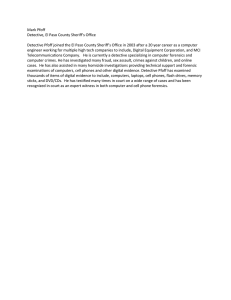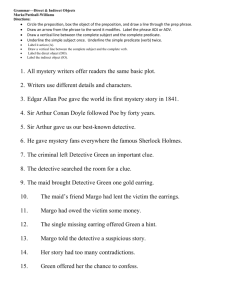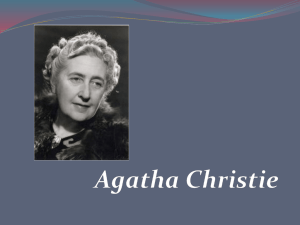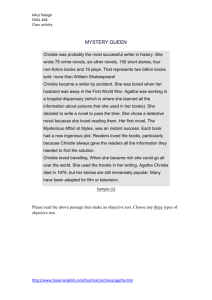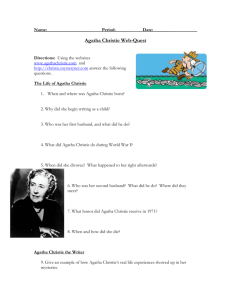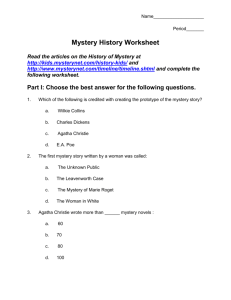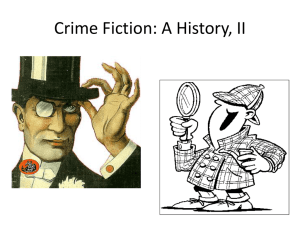Agatha Christie & Mystery Genre: Analysis & Elements
advertisement
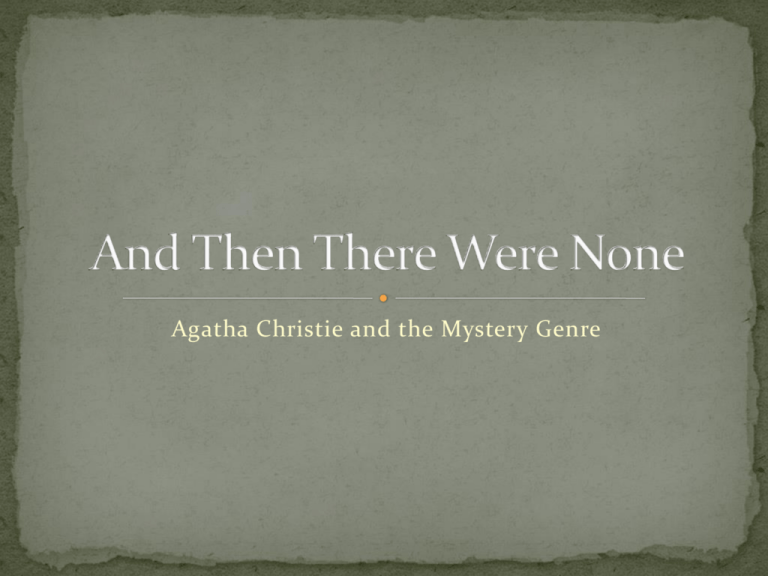
Agatha Christie and the Mystery Genre Never attended school; her mother believed that a child’s mind ought to be left alone to receive its own impressions Taught herself to read First married Archibald Christie in 1914 Her mother died; when Agatha returned to her husband from the arrangements, he asked for a divorce (nice guy, huh?). They were divorced in 1928; this brought on a nervous breakdown and a 9-day disappearance. Agatha marries Max Mallowan in 1930, an archaeologist, and she began to accompany him on his expeditions—this appeared in her writing Sold more books than any author except Shakespeare Translated into more than 100 languages Popular because she tells simple stories in plain English with ample dialogue without adding feelings of her own Uses many devices in her writing The house party murder The conventional triangle turning around The nursery rhyme The poisoning "One of the pleasures of writing detective stories is that there are so many types to choose from: the light-hearted thriller, which is particularly pleasant to do; the intricate detective story with an involved plot which is technically interesting and requires a great deal of work, but is always rewarding; and then what I can only describe as the detective story that has a kind of passion behind it -- that passion being to help save innocence. Because it is innocence that matters, not guilt." -- Agatha Christie in her Autobiography. A subgenre of narrative fiction; often thought of as a detective story. Usually involves a mysterious death or a crime to be solved. In a closed circle of suspects, each suspect must have a credible motive and a reasonable opportunity for committing the crime. The central character must be a detective who eventually solves the mystery by logical deduction from facts fairly presented to the reader. This classic structure is the basis for hundreds of variations on the form. To engage in and enjoy solving a puzzle. Explore moral satisfaction (or dissatisfaction) at resolution. Consider human condition and how to solve or avoid human problems. Main character who is a detective who sets out to solve a mystery. Suspects and their motives; these must be weighed and evaluated. Overt Clues about the crime are presented. Hidden Evidence is presented, i.e., essential details are offered in such a way that they seem unimportant. Inference Gaps—mysteries, by their very nature, do not tell the whole story. It is up to readers to notice the gaps in the story and try to fill these gaps by using and connecting the information that is presented. Suspense—having to hold various possible conclusions at bay as you wait to see what happens; reader is expected to enjoy the suspense, and to read to find out what will happen. Foreshadowing—clues left by the author as to possible outcomes. Red herring—a kind of foreshadowing clue that leads the reader to false conclusions.

